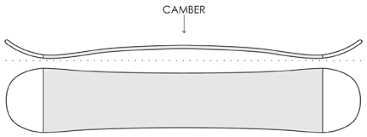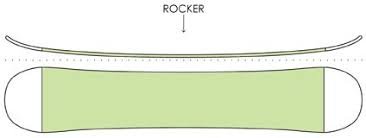What is Rocker?
There are three main types of snowboard profile: camber, rocker, and flat. Many modern shapes use a combination of more than one of these.
Although camber has been around since long before rocker, we classify it as a type of rocker for purposes of simplicity. Rocker is also known as reverse camber, so think of camber as reverse rocker.
Camber
This is the traditional profile. Camber is a slight upward curve in the middle of a board, with the contact points - where an unweighted board contacts the snow - close to the ends. Camber requires more precise turn initiation and offers superb precision with plenty of power on groomed terrain and harder snow. The rider's weight puts it even and concentrated pressure on the edge from tip to tail, resulting in increased edgehold and better "pop." Racers and high level park riders often prefer camber.



